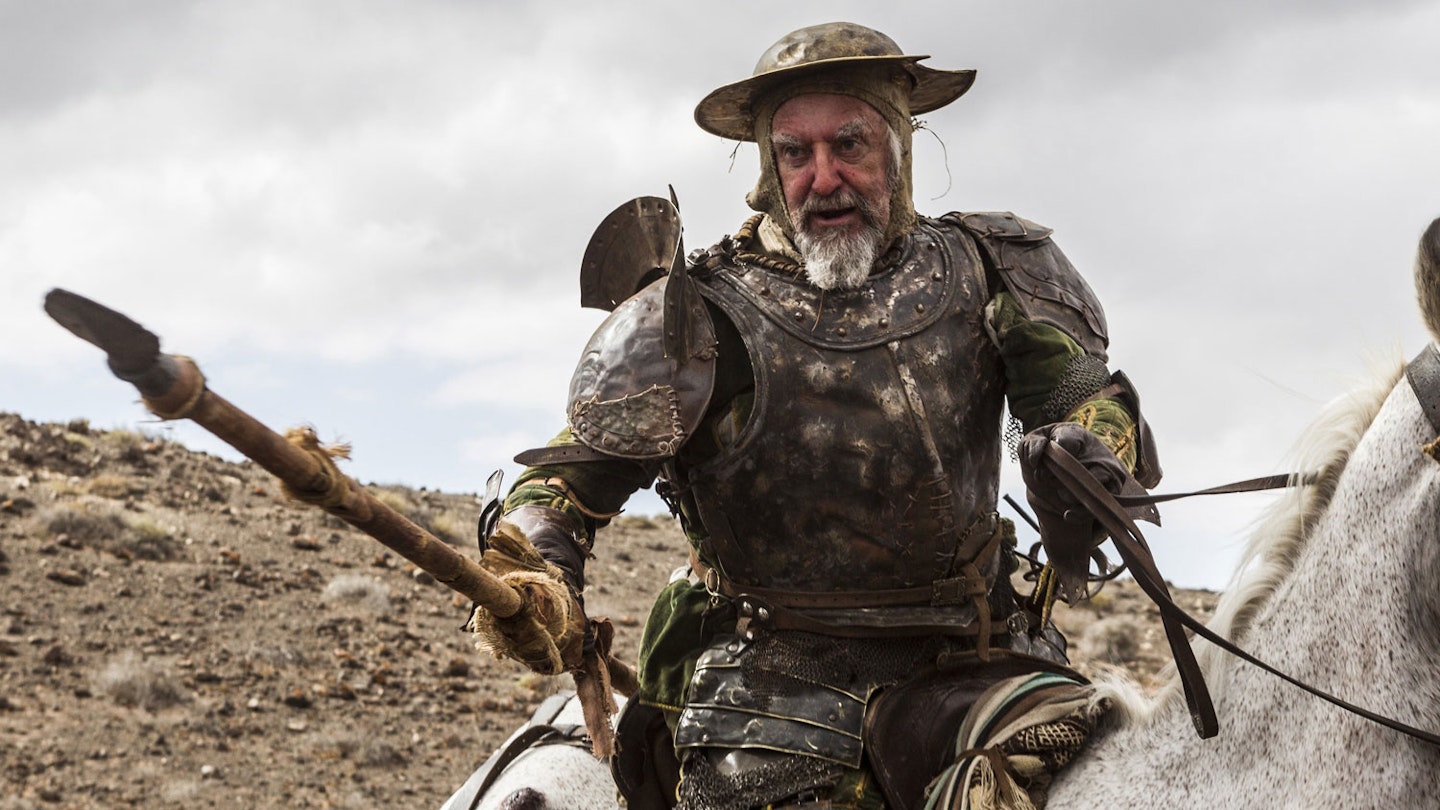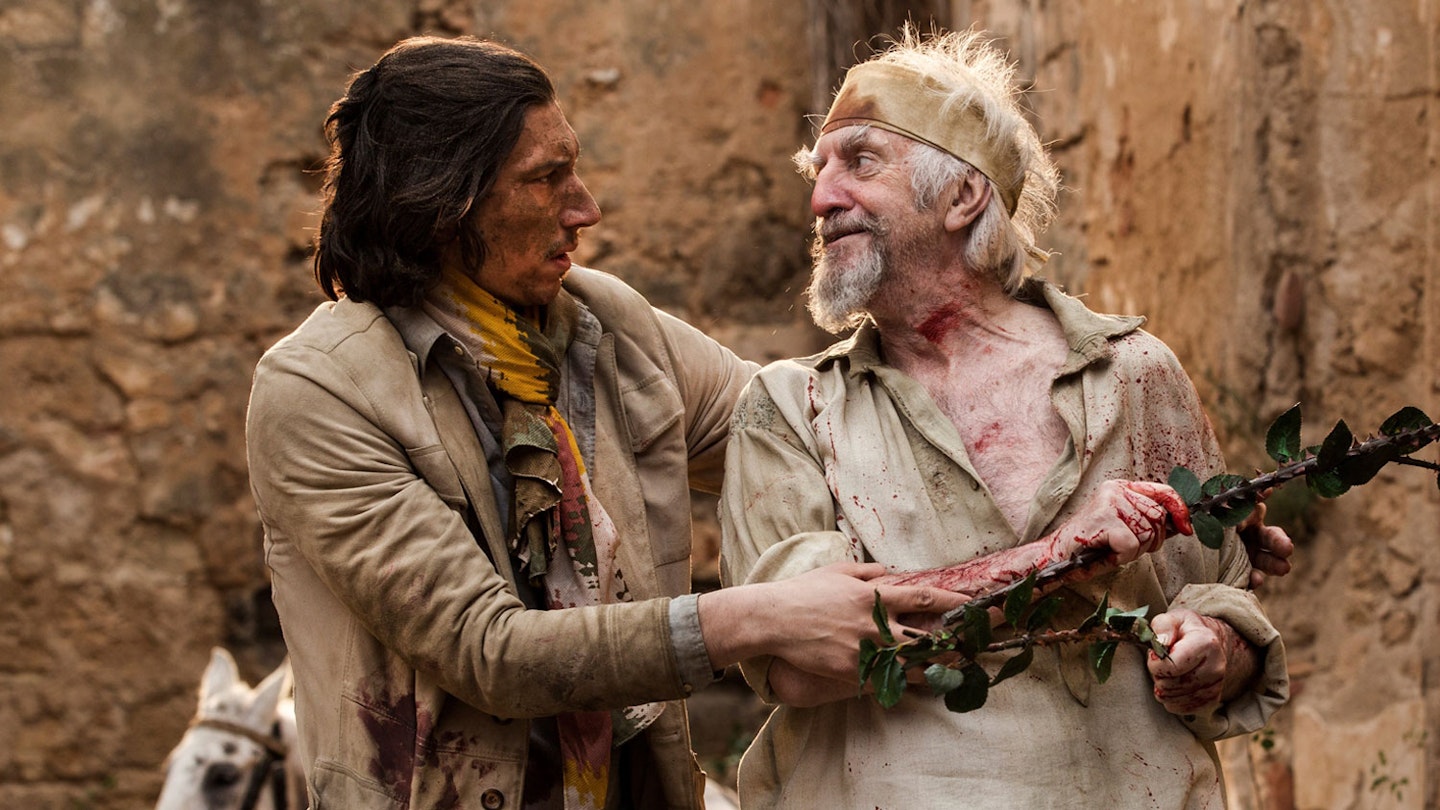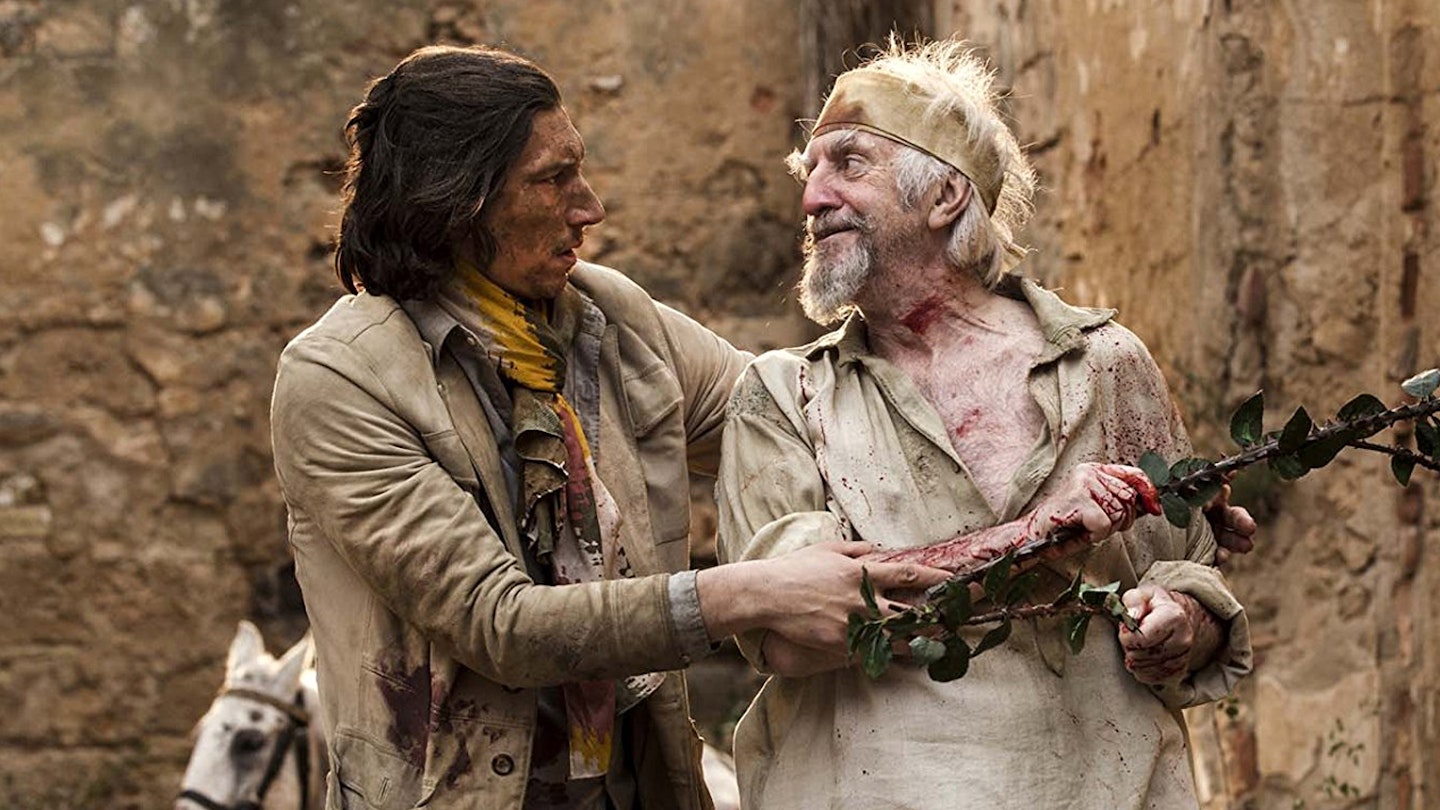In some way, just the fact that The Man Who Killed Don Quixote has made it to multiplexes should see it hailed as a triumph. Some 25 years in the making, Terry Gilliam’s passion project has seen every setback that could ever hit a movie. Location issues, cast injury (Jean Rochefort), financial woes, legal wrangles, and a revolving door of actors (Johnny Depp, Sean Connery, Robert Duvall, Michael Palin, John Hurt) brought Gilliam to his knees, reconfiguring his production to whatever tragedy hit next (it’s all entertainingly documented in 2002’s Lost In La Mancha). The finished article is perhaps unsurprisingly a fascinating mess, full of bold ideas, disjointed storytelling, striking visuals, narrative longueurs and good performances, but at the very least it’s a singular vision driven by an intention to do something original.

It’s easy to draw parallels between Gilliam and both Pryce’s Quixote, a dreamer tilting at windmills, and Driver’s Toby, the filmmaker toggling between his vision and selling out. The meta notion of a director struggling for his art is played out in the first act on location in Spain, Gilliam lacing the passage with familiar barbs about the philistine nature of the film business. Revisiting his amateur take on Cervantes, Grisoni travels to the village he used as a backdrop and discovers the shoemaker who played Quixote in his student version, living his life as the wannabe errant knight and believing the filmmaker to be his Sancho Panza.
A film that is always striving for something.
The odyssey that follows riffs on Gilliam’s obsessions, from slapsticky set-pieces to medieval imagery, but what it doesn’t do is deliver Quixote/Panza’s quest with narrative urgency or character development, giving the film a meandering quality. Some of the filmmaking is inspired, other bits as amateur as Grisoni’s student flick. But it’s a film that is always striving for something.
Happily Gilliam is helped out by his leads. Driver gives Grisoni a goofy energy that keeps things moving — following his version of Stephen Sondheim’s ‘Being Alive’ in Marriage Story, his full-hearted rendition of Eddie Cantor’s ‘If You Knew Susie’ in a forest brings the house down — and there’s something touching in his teaching the old shoemaker how to be Don Quixote. Pryce, who played a dreamer for Gilliam in Brazil, is superb as Quixote, the perfect mixture of twinkly mischievousness, ludicrousness and knightly nobility. The other glue holding the ramshackle enterprise is Gilliam’s tangible commitment to the material, to the oddballs and outcasts, the yearning of trying to bring creativity to fruition. After all these years, it is poignant that he falls short, a glorious misadventure that might be the dictionary definition of Gilliam-esque.

